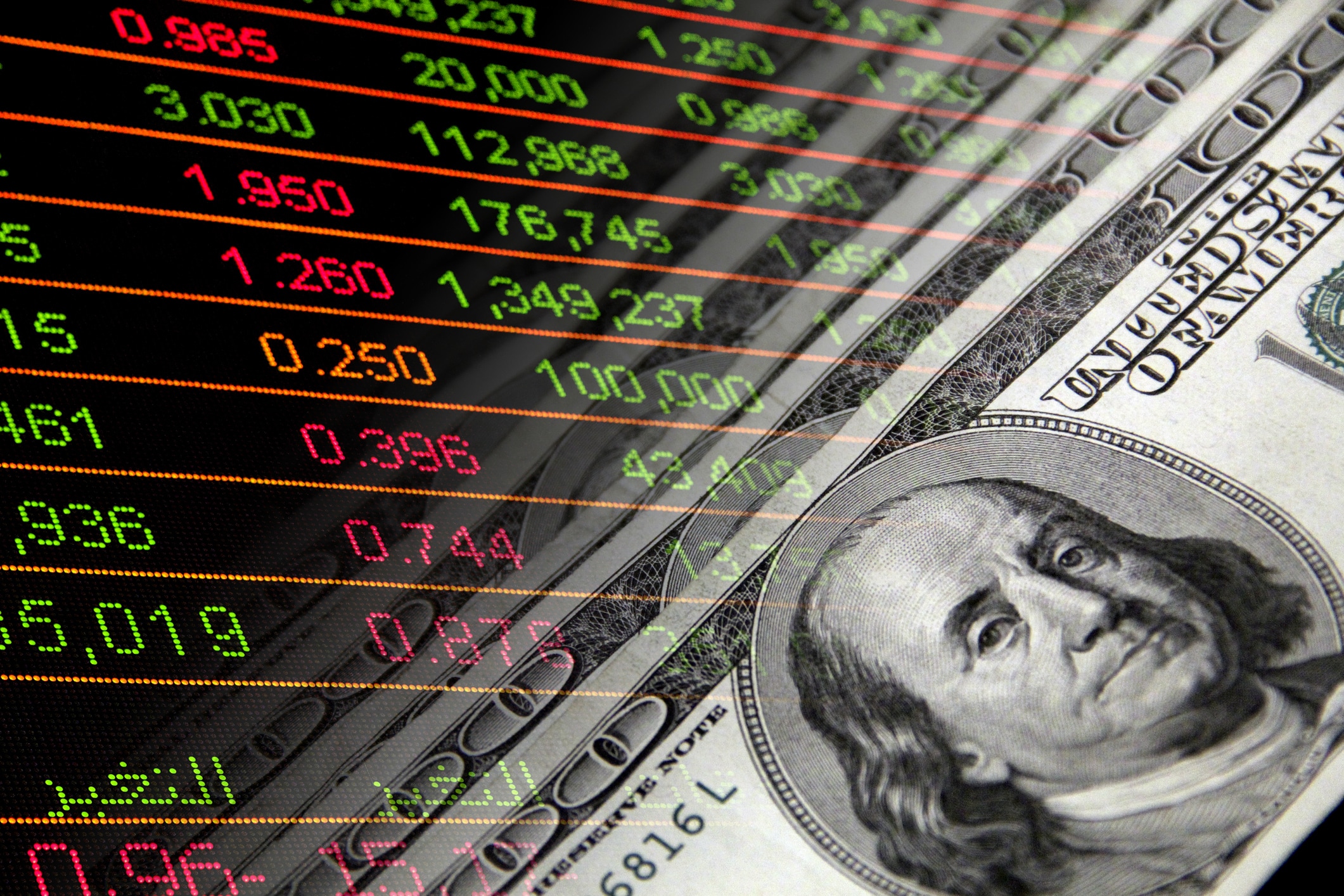
European markets have finished a choppy week with a modest rebound, with the FTSE 100 breaking a three-day losing streak, although it is still set to fall for the second week in a row, having sunk to a three-week low yesterday.
Europe
A downside miss in US PPI for December has once again pulled forward speculation about central bank rate cuts, acting as a drag on US, UK and German 2-year yields across the board.
A sharp rise in oil prices to one-week highs in response to the military retaliation by the US and UK on Houthi military assets is also helping to boost the energy and defence sectors with the likes of BP and Shell edging higher, while defence contractor BAE Systems is up at new record highs, with Rolls-Royce and Melrose Industries also higher.
Airbus' share price is higher after the aircraft maker reported record sales for 2023, as the company benefitted from the various problems of its US counterpart Boeing who appear intent on doing the equivalent of scoring into their own goal on a regular basis.
On the downside Burberryshares have sunk to their lowest levels since March 2020 after issuing another profits warning today. Since April last year the luxury sector has been under pressure as it became apparent that the rebound in Chinese demand at the start of 2023 started to fizzle out. With US demand also showing signs of significant weakness it’s been one way traffic as far as share price declines is concerned, and this today’s trading update from Burberry has shown that the malaise around luxury remains in place.
As recently as April last year Burberry shares were trading at record highs, however since those heady heights the share price has collapsed, falling to 3-year lows earlier this month, and falling to the lowest levels since the post lockdown lows in March 2020. Today’s profit warning has seen the shares slide further after the luxury retailer said it expects full year results to be below previous guidance.
Q3 retail revenue came in at £706m, below forecasts of £716m, with same store sales falling by -4%, with the US business seeing a -15% decline. Full year adjusted operating profit is now expected to be in the range of £410m and £460m, due to currency headwinds of £120m.
US
US markets opened higher after the release of today’s Q4 numbers from US banks, and a weaker than expected December PPI reading. December PPI inflation saw a decline for the third month in succession, month on month, even as the annualised number rose from 0.9% to 1% sending the 2-year yield to its lowest levels since last May below 4.2%.
On the banks front Citigroup shares slipped lower yesterday after reporting it was setting aside $1.3bn in charges due to write-downs in the US, as well as additional charges in relation to Russia and Argentina. Today’s Q4 numbers also saw the bank report a slowdown in trading revenue as revenues came in at $17.44bn, well below forecasts of $18.68bn, while posting a loss of $1.16 a share. The bank said it expects to cut 20,000 jobs over the next 12 months, with CEO Jane Fraser saying that Q4 was a “very disappointing” quarter.
The benchmark to a decent set of numbers was already high heading into today’s Q4 numbers from JPMorgan Chase today given the shares traded at record highs at the end of last week. To signal further record levels the bank needed to not only deliver on record revenues for today but also deliver a strong outlook for the next fiscal year. They managed to do both with a strong outlook for the upcoming year pushing the shares to new record highs.
Today’s Q4 numbers have seen the bank deliver a record Q4 with revenues just shy of the $40.2bn expected, falling short at $39.94bn. Provisions for credit losses came in at $2.76bn which was slightly above forecasts, while profits came in at $3.04 a share, with the FDIC special assessment fee serving to knock $2.8bn share off the profit number.
On the trading side the results were a mixed bag with equities trading falling short at $1.78bn, while FICC sales and trading came in at $4.03bn. Investment banking revenue also fell short at $1.58bn. The annual numbers saw JPMorgan deliver revenues of $158.1bn, and net interest income of $89.27bn. For 2024 JPMorgan says it expects to deliver higher net interest income of $90bn, an ambitious target at a time when rates are likely to be lower.
Bank of America has seen Q4 revenues come in short of forecasts at $22bn with the results including the bank setting aside $2.1bn in respect of the FDIC special assessment fee to recover the losses caused by the failures of Silicon Valley and Signature Bank. FICC trading revenue came in short of forecasts at $2.21bn, although equities trading helped to pick up some of that miss with a better performance at $1.55bn. Net interest income for Q4 was $14.09bn slightly ahead of forecasts while the bank set aside $1.4bn in respect of credit losses with profits coming in at $0.70c a share.
Wells Fargo, which is one of the US biggest mortgage and credit providers is always a useful bellwether of the US consumer given the lack of an investment banking division. Q4 revenues rose to $20.84bn although profits were below expectations at $0.86 a share, with the special assessment fee costing the bank $1.9bn, while bank costs were also higher during the quarter at $15.8bn, a figure that was 11% higher than expected. Revenues across the various businesses were ahead of forecasts however Wells Fargo set aside $1.28bn due to higher losses in its real estate division. Net interest income came in at $12.8bn above forecasts. For 2024 Wells Fargo was much less bullish than JPMorgan, predicting that net interest could fall by as much as 9%
Airlines are also lower after Delta Airlines adjusted its 2024 profit targets lower due to concerns over higher costs saying it expects full year profits to come in between $6 to $7 a share, below the previous estimate of more than $7. Q4 revenues came in at $14.22bn and profits came in at $1.28c a share.
Tesla shares slipped to two-month lows yesterday and has come under further pressure today after announcing that it is closing its Berlin factory for two weeks due to a lack of parts caused by disruption in the Red Sea which is delaying the delivery of important components in the construction of its vehicles. Tesla production costs have already been rising in recent months and look set to go higher after the company announced pay increases to staff across the US, while cutting prices on its Model 3 and Model Y cars in China as it strives to maintain its market share against its Chinese counterpart BYD.
FX
The US dollar gave up its early gains on the back of today’s weaker than expected PPI readings for December with the decline in short term yields prompting a decent move higher across the board.
The rebound in oil and gas prices has given a lift to the likes of the Norwegian Krone and the Canadian dollar which have both outperformed their peers.
The pound has struggled today after this morning’s UK GDP numbers for November suggested the UK economy may have avoided a technical recession at the end of last year, as a rebound in services activity saw the economy expand by 0.3%.
On the downside we did see a downgrade to previous months which suggests that the slowdown in Q3 of -0.1% might have been deeper than originally thought. Nonetheless the strength of recent services PMI numbers suggests the economy rebounded well towards the end of 2023 which means we could see modest growth in Q4, with the pound overall seeing some modest gains on the week. This of course assumes that the recent updates from UK retailers are an accurate guide of how the economy performed at the end of last year.
Commodities
The launching of air strikes by US and UK forces on Houthi assets in Yemen has seen gold prices ratchet higher as concerns over further escalations in the Middle East prompt some haven buying, while today’s US dollar weakness is also helping on the margins.
The US and UK military response to the continued attacks on commercial shipping have also served to push up crude oil prices to their highest levels in two weeks. The overnight move could also mean that the likelihood of the Red Sea being safe for commercial traffic in the short term has become much less likely with the risk that a major flare up has become more likely. This could also mean that inflation pressure could become stickier in the short term as freight costs increase, as trade traffic diverts around the Horn of Africa, or companies pay to go by air freight.
Volatility
Netflix stock leapt higher on Thursday morning after supportive comments from the company heralded the success of the advertising-supported subscription models. Trading lower monthly fees for a degree of commercial content appears to be paying dividends for the company, with user numbers in this category growing 50% between November and December. Whilst opening gains weren’t sustained, the stock still ended almost 3% higher with one day vol of 72.92% against 40.06% for the month.
The Nikkei 225 continued to move higher on Thursday and although the pace of gains may have slowed from earlier in the week, a couple of spikes higher at either end of the day do seem to have served to bolster price activity levels. One day vol on the index printed 24.18% against 14.75% for the month, but with gains of more than 6% since the start of the year, the sustainability of the move may be called into question.
The slightly hotter than expected US inflation data released yesterday also served as a stark reminder that the hawks at the Federal Reserve were still defending a meaningful case. The result was some fairly dramatic support for the US Dollar, although this didn’ t necessarily last long. AUD/USD had been trading close to highs for the week, dipped around 0.8 cents lower off the back of the data before seeing almost a complete reversion. One day vol on the pair printed 11.93% against 10% on the month.
Natural gas was offered another leg higher after the inventory data posted bigger than expected draws of US reserves. Having sold off around 15% from highs earlier in the week, the news of falling stocks resulted in a close on 10% gain before some modest profit taking was again observed. One day vol on Nat gas stood at 92.1% against 68.7% for the month.
Disclaimer: CMC Markets is an execution-only service provider. The material (whether or not it states any opinions) is for general information purposes only, and does not take into account your personal circumstances or objectives. Nothing in this material is (or should be considered to be) financial, investment or other advice on which reliance should be placed. No opinion given in the material constitutes a recommendation by CMC Markets or the author that any particular investment, security, transaction or investment strategy is suitable for any specific person. The material has not been prepared in accordance with legal requirements designed to promote the independence of investment research. Although we are not specifically prevented from dealing before providing this material, we do not seek to take advantage of the material prior to its dissemination.






















